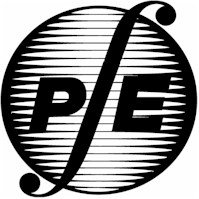Idaho Society of Professional Engineers
Friday Update - 07/09/04
WELCOME TO ISPE 2004 - 2005 SUSTAINING ORGANIZATIONS!
AHJ Engineers, PC
Delta Engineering Group
Yanke Energy, Inc
UPCOMING EVENTS:
●
NSPE 2004 Convention and Expo, July 8 - 10, 2004, Honolulu, Hawaii
●
Mailing Deadline for FE and PE applications for Fall 2004 testing, August 1,
2004
●
ACEC of Idaho Annual Meeting, August 6 - 7, 2004, Sun Valley, ID
●
NSPE Western and Pacific Regional Meeting, September 17-18, 2004, Coeur d'Alene,
ID. Visit the ISPE web site for
more information.
A REALLY USEFUL WEB SITE
How Stuff Works is an extremely
useful resource with all sorts of information and child friendly accessibility.


MATHCOUNTS PROBLEM OF THE WEEK
Can you solve this MATHCOUNTS problem? The answer will appear in next week's
edition of the Friday Update!
50 Years Of Research Proves It!
The link between smoking and cancer was confirmed back in 1954. Fifty years
later, a 50-year study by the same doctor has uncovered more important
information. 91-year-old Professor Richard Doll of Oxford University has found
that people who quit smoking at an early enough age can avoid nearly all of the
risk of dying prematurely. Doll believes that cigarette smoking reduces a
smoker’s life by approximately 10 years. Consider a life-long smoker who only
lives 63 years. According to Doll, this person reduced his/her potential
life-span by what percent? Express your answer to the nearest whole number.
--------------------------------------------------------------------------------
The good news is that the high school smoking rate is at its lowest level since
1991, and this level has declined 40% since its peak in 1997. In addition to the
anti-smoking campaign effort, the rising cost of cigarettes is credited with
some of this decline. Assuming that the average cost of cigarettes in 1997 was
$1.85 a pack, the average cost of cigarettes doubled to $3.70 a pack in 2003 and
the progression was a linear one, what was the average cost of cigarettes per
pack in 2001?
--------------------------------------------------------------------------------
The average cost of a pack of cigarettes in 2004 is said to be approximately $4
per pack. Imagine smoking/buying a pack of cigarettes per day for four years!
How much money would this smoker waste on cigarettes during this time period?
Answer to last week's problem:
We basically have points (55, 211,400) and (80, 328,491), and we are trying
to solve for y, such that (100, y) is on the same line as the other two points.
Because this is a linear relationship, we also can use some proportional
reasoning. Notice that the increase of 25 seconds resulted in an increase of
328,491 – 211,400 = 117,091 feet. This means that an increase of 25 ÷ 5 = 5
seconds would result in an increase of 117,091 ÷ 5 = 23,418.2 feet. We want to
know what an additional increase of 20 seconds would do. This is four sets of
five minutes, and would therefore result in an increase of 4 × 23,418.2 =
93,672.8 feet over the height of 328,491 feet. This is a total height of 328,491
+ 93,672.8 = 422,164 feet, to the nearest whole number.
--------------------------------------------------------------------------------
From the previous question, we know that SpaceShipOne achieved a height of
328,491 feet. This means that 7/1 = 328,491/x, where x is the height at which
the rocket was released. Using cross-products, we have 7x = 328,491 and x =
47,000 feet, to the nearest thousand.
--------------------------------------------------------------------------------
There is a prediction that $700 million will be made each year off of flying
15,000 people into space. That is an estimated revenue of 700,000,000 ÷ 15,000 =
$47,000, to the nearest thousand.
If you want to see last week's problem again, click on
http://www.mathcounts.org/Queries/POW_Archive.taf?_function=detail&Q_A_uid1=501&_UserReference=D8790CE3E84C5AA440EB0F34
Idaho Society of Professional Engineers
PO Box 170239
Boise, ID 83717-0239
208-426-0636
Fax: 208-426-0639
E-Mail: ispe@rmci.net
Web Site: www.Idahospe.org
 Idaho
Society of Professional Engineers
Idaho
Society of Professional Engineers